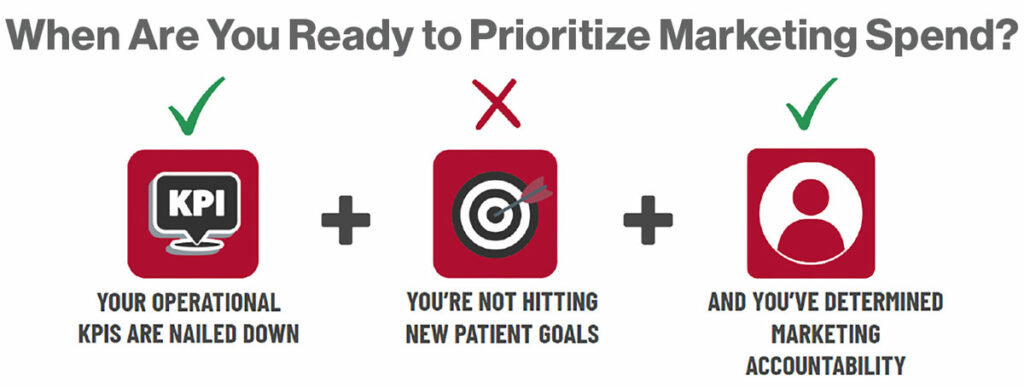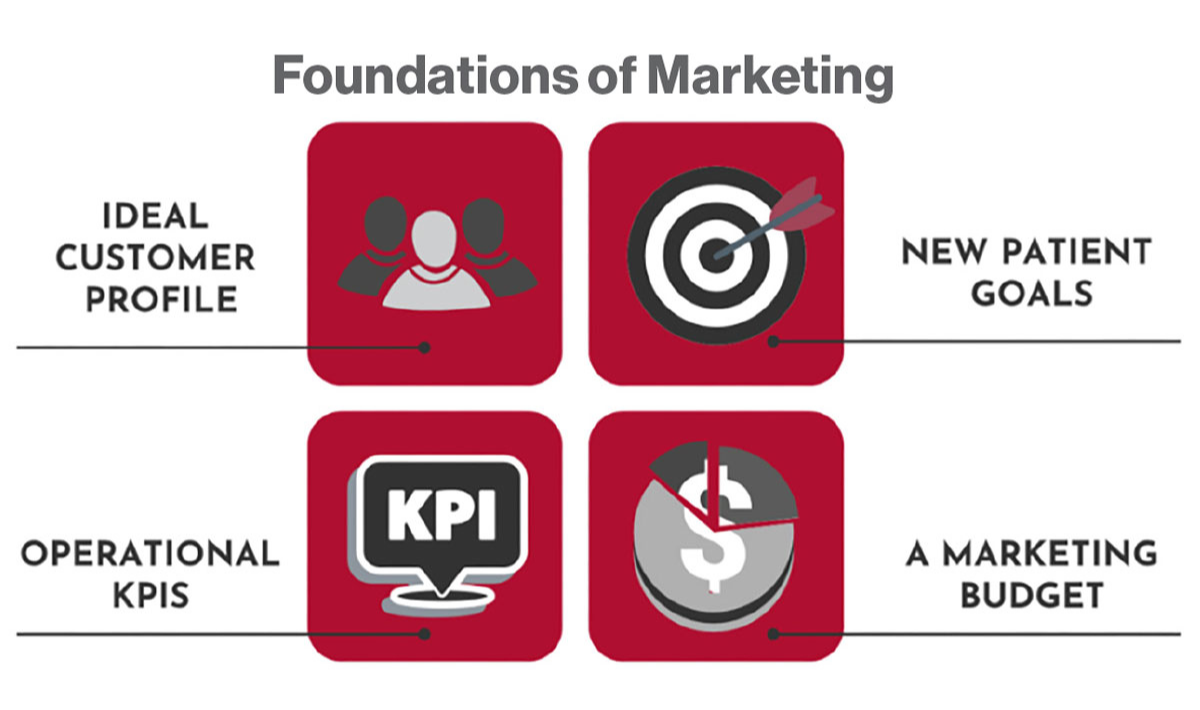Creating a strong marketing plan is integral to your organization’s success.
By Jenna Hughes
The focus of dental care is to assist patients while encouraging them to properly maintain their oral health, but a dental practice is ultimately a healthcare business. “This means that a part of maturing as a dental organization is ensuring the revenue and finances of the company are as healthy as the clinical outcomes being provided to patients,” said Amber Nish, Coach, DEO.
A healthy bottom line requires a solid marketing strategy. Indeed, focusing and refining marketing efforts ultimately allows a dental practice to gain more profit and positively impact patients.
DEO assists practices with three main “levers”: growing your business, yourself, and your team. Growing business revenue, through marketing, is one facet of growing a successful company.
The following are four keys to a solid marketing foundation:
No. 1: Get clear on your ideal customer profile
In dental practice marketing, each company must determine its ideal customer profile. Consider who the ideal patient is for your business. The “ideal” patient is different for every dental practice based on its business model, Nish said, and can range from a pediatric to a geriatric patient base. Dental practices must be able to match the capabilities of the practice to the ideal patient to avoid misaligning the doctor and patient.
“Understanding your ideal customer profile allows your organization to maximize marketing dollars through direct marketing efforts,” Nish said. “Being clear and concise as to your patient demographic allows your practice to customize its client experience.”

No. 2: Set marketing goals
Dental leaders should consider these questions: What are their practice’s production goals? And how many new patients are expected? Evaluating both production and new patient goals can help teams determine their marketing budget and strategy.
Start to answer these questions by averaging the number of patients by each practice within a company. On average, a healthy established company can handle about 50-60 new patients at a smaller practice, and up to 100 in a larger practice. Also, in a healthy average company, 25% of the total patient volume comes from new patients.
“Understand what your organization’s biggest constraints are,” Nish said. “Be sure to evaluate ambitious marketing goals based on the reality of the situation. Marketing leaders need to be aligned and understand the strategy, and there needs to be operational marketing communication so that your organization isn’t spending money that doesn’t exist.”
No. 3: Align on operational KPIs
A dental organization should have clear key performance indicators (KPIs) established before setting a marketing budget. The No. 1 KPI to track when it comes to marketing efforts is the phone answer rate. Out of the total number of inbound calls, if 40% went unanswered or to voicemail, your company has a 40% no-answer rate.
“Marketing KPIs such as this are important because marketing efforts pour revenue into one thing: getting the practice more phone calls,” Nish said. If a practice is spending $5,000 to drive phone calls and 40% go unanswered, that means there is a $1,500 revenue loss. To avoid unanswered calls, dental companies may set a standard requiring teams to have a certain number of answered calls before spending more of the budget on marketing.
Most of the time, phones aren’t getting answered because front desk staff are busy greeting patients, calling insurers, cleaning instruments, etc. But the reason for calls going unanswered must be understood. Reach out to your phone service provider for a baseline number if you don’t know the number of unanswered calls, and they can inform you. Raise awareness to the team on lowering the unanswered call rate, and make sure it is a number they see every week.

No. 4: Establish a budget
A dental organization is ready to prioritize marketing spend and establish a budget when: operational KPIs are clear; it has hit new patient goals (if you are already hitting patient goals, there is no need to increase marketing spend); and the company has determined a dedicated person responsible for marketing strategy. The chosen person should know that their goal, along with other responsibilities, is to oversee marketing.
Once all these goals have been met, a team can set its marketing budget. To do so, the team should come together to determine production first and then use those numbers to determine its marketing budget.
Successful marketing starts a minimum of a month before patient numbers are set to increase. In a highly competitive market, marketing budgets may be as high as 5-7% of revenue. In rural areas, it may only be 2-3% of revenue. In suburban areas or with established organizations, the budgets may grow to 10-15% of revenue. If you’ve never done a marketing budget for your organization, start with a 3% of revenue budget.
Marketing should be categorized as a practice expense line item, Nish said. Make sure this is being correctly followed by the finance team. Things can accidentally be spent with marketing budgets that aren’t for marketing. Make sure everything is allocated to practice-level expenses.
The marketing budget can be spent on a wide array of services, including online booking, branding, local marketing, paid ads, landing pages, consistent content generation (blogs, website posts, etc.), multi-channel marketing, and more. Determine how much you are paying on marketing per patient to determine the marketing value for your specific organization.
Marketing is ultimately a tactic that can propel your business forward into earning more revenue and focusing on better patient care. “Marketing is a team effort, requiring consistency from front office staff to dentists,” Nish said. “Creating a strong marketing plan is integral to a business’s success, and has the power to create productive teams and a strong financial outlook for a dental business.”
Amber Nish is the newest coach on the DEO team, and brings a wealth of marketing knowledge to the community. She is a 10-year veteran in the dental marketing space. Most of Amber’s career was spent at Community Dental Partners where she started as an onsite location manager and was promoted to Chief Marketing Officer, serving over 70 locations and multiple brands. One of her most transformative roles was serving as the Call Center Director and gaining a deep understanding of lead conversion and practice needs.






